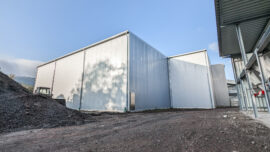
Health & Safety: Sound Enclosure for Block Machine and Operator Room
The market for qualified and reliable operators of automated concrete block paving equipment has become very scarce. In addition to salary and benefits, the work environment plays a significant role in the attractiveness of jobs in the concrete products industry. To attract and retain the very best operators, the workplace must not only be safe but also provide an environment that allows people to communicate and think. Very few concrete product plants, even the most modern, provide this type of work environment. Kraft Curing has designed and installed its first sound enclosure and operator room which surpass national noise protection standards and go far beyond in order to create the best possible work environment for recruiting the best people.
Company Background:
W.D. Lewis established itself as Civil Engineering Contractors within the South Wales area in 1972. Diversification into sub-contract groundwork for major home builders as well as the manufacture of concrete products began in the mid-1970s. W.D.L. (Concrete Products) Ltd., W.D.L Homes Ltd. and W.D.L. (Contracting) Ltd., located in Aberdare, UK, form W.D.L. Holding Ltd. owned and operated by two brothers, Robert and Martin Lewis, and their sons. While the contracting company carries out groundworks (roads, sewers, and foundations), the concrete products company manufactures and supplies a variety of concrete blocks for inter-company requirements and to the market. W.D.L. Homes builds about 50 homes per annum. The block business, with 3 production machines, employs over 40 people while the overall company provides over 250 jobs.
Project Overview:
The decision to build the third block plant was made in late 2015 which was followed by a visit by Martin Lewis to the 2016 BAUMA, held in Munich, Germany. The first decisions were block machine, handling system, batch plant, and curing system. The visit to the world’s largest construction show made some decisions crystal clear and others even more difficult. Martin spent the next 4 years visiting plants, comparing results of different equipment, and began placing orders for equipment in early 2021.
Robert and Martin Lewis would build a plant for their sons, the next generation. The vision was for a very efficient plant to produce blocks with minimal cement content, low energy, and operating costs; an ergonomic plant with plenty of light and space designed for ease of work, easy cleaning and maintenance; and a safe plant with minimal noise for their sons working in the business and to attract and retain the best people from the local workforce.
Sound Enclosure Design:
As Kraft Curing supplied the curing system integrated into the patented Kraft® Racks, we were requested to supply a sound enclosure and operator control room that provided a level of noise reduction that was beyond what was available in the industry. As the name suggests, Kraft Curing is a supplier to the concrete industry, specializing in concrete curing equipment and lacking the acoustic competence to supply sound enclosures. At the suggestion of W.D. Lewis, after an analysis of existing sound enclosure solutions available in the market and a partnership agreement with an acoustic engineering firm, Kraft Curing made the decision to supply their first sound enclosure and control room. The goal was to supply the highest level of noise abatement available in the industry in order to provide the safest and healthiest working environment and not simply be an “also ran.”
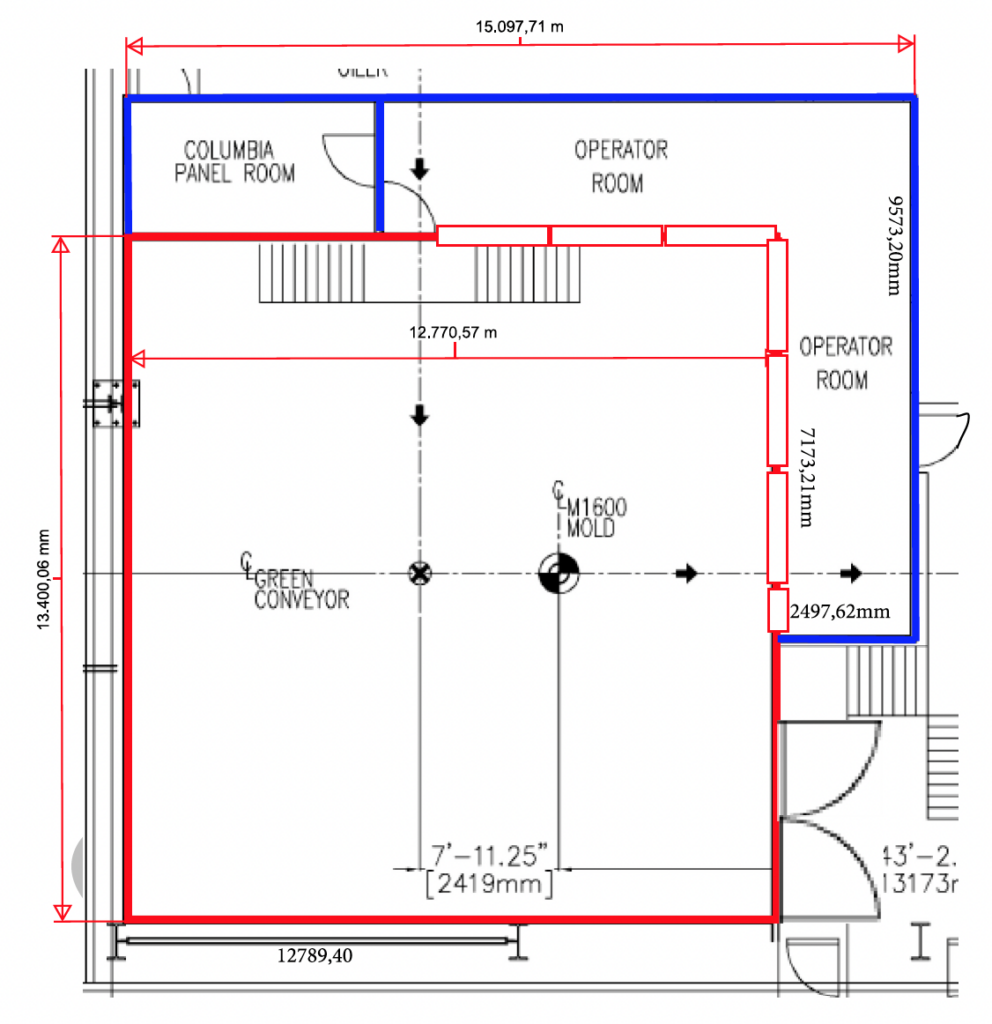
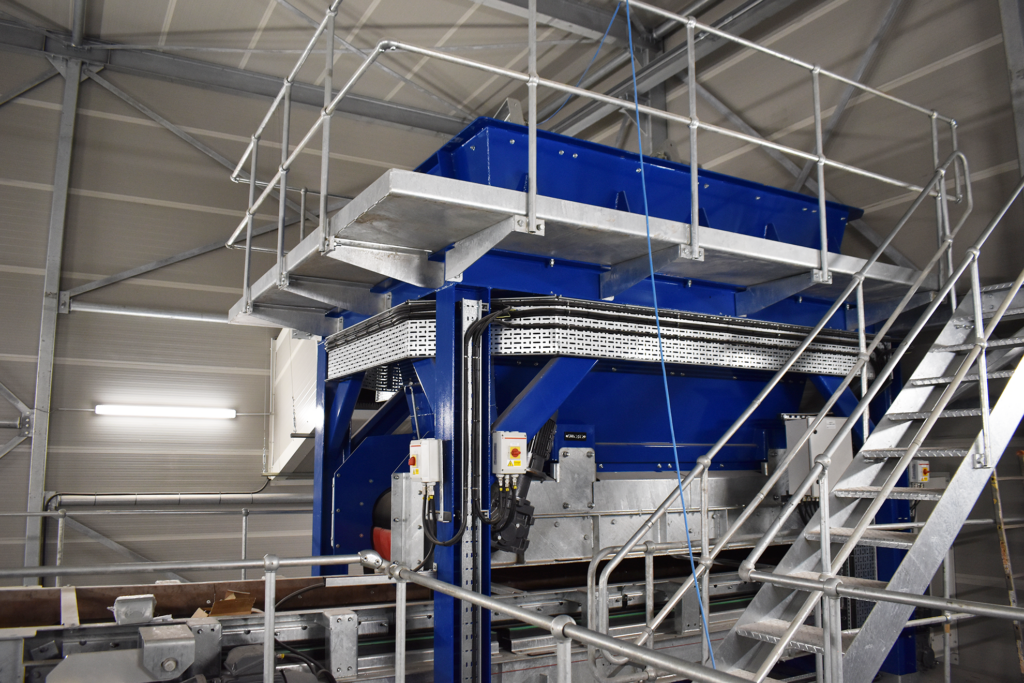
The sound enclosure around the production machine is designed to reduce airborne noise within the enclosure and throughout the areas outside the machine room – i.e. throughout the factory and outside the factory.
The goal was to reduce the airborne noise 3 meters outside the machine room (in the factory) to a level equal to approximately 85 dB(A). The sound insulated operator room and electrical panel room are, again, insulated against noise. The goal here was a noise level of approximately 70 dB(A).
As the sound enclosure and operator control room was “clean slate” for Kraft, we were able to incorporate ideas from W.D. Lewis as well as best practices from other industries and the acoustic design consultants’ knowledge to come up with new solutions for the concrete products industry.
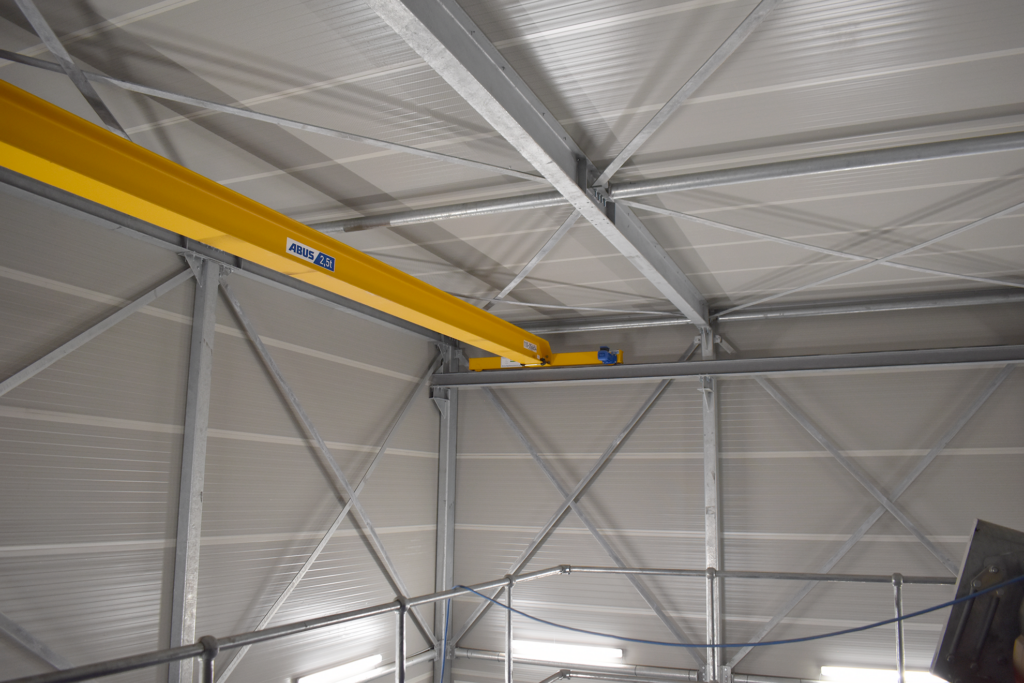
For example, the addition of a bi-directional crane for the changing of moulds, but also for the replacement of wear parts or complete overhauls on the block machine makes work in this area much easier, faster and safer.
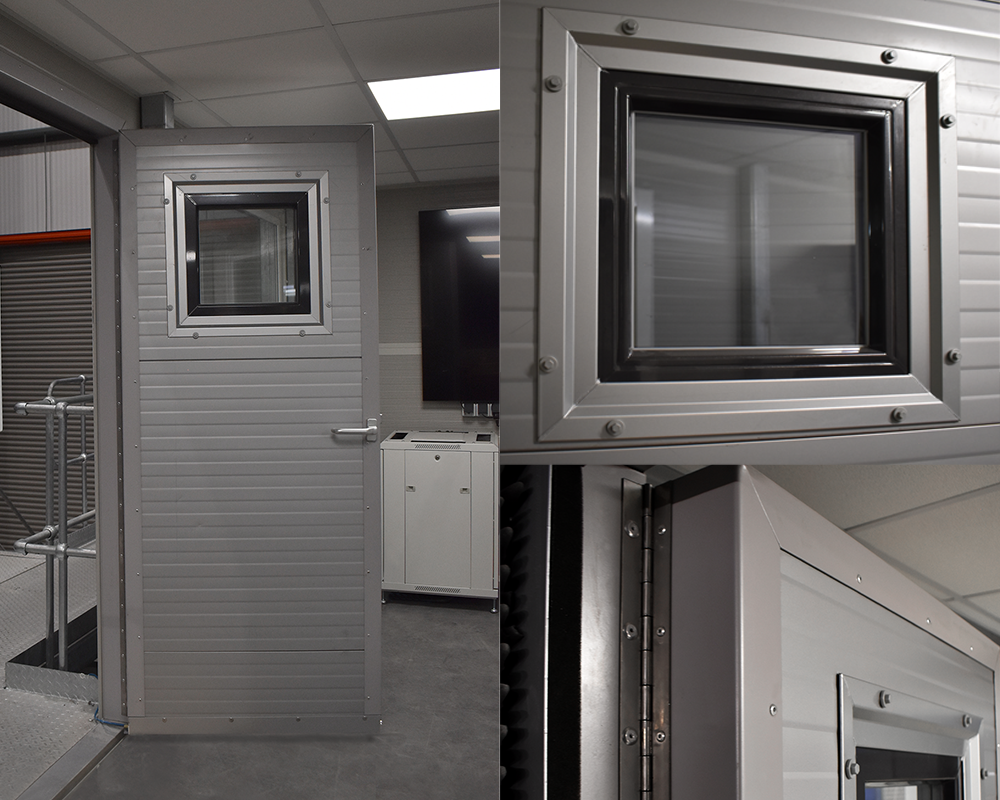
The use of triple-pane viewing windows with variable spacing of the glass surfaces provided a much better noise reduction than a simple standard 3-pane window.
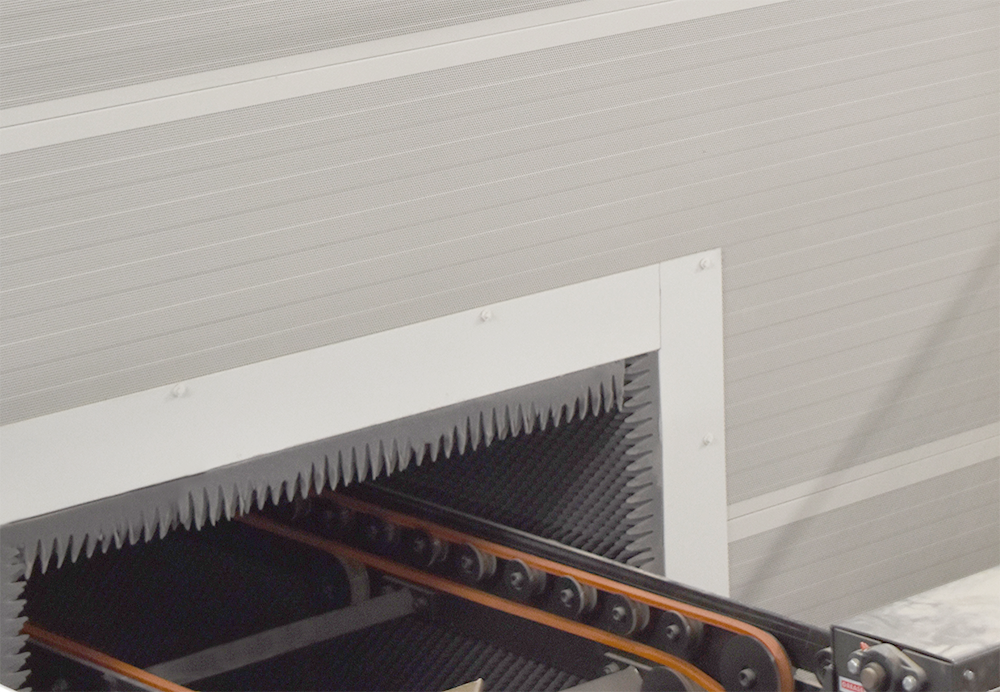
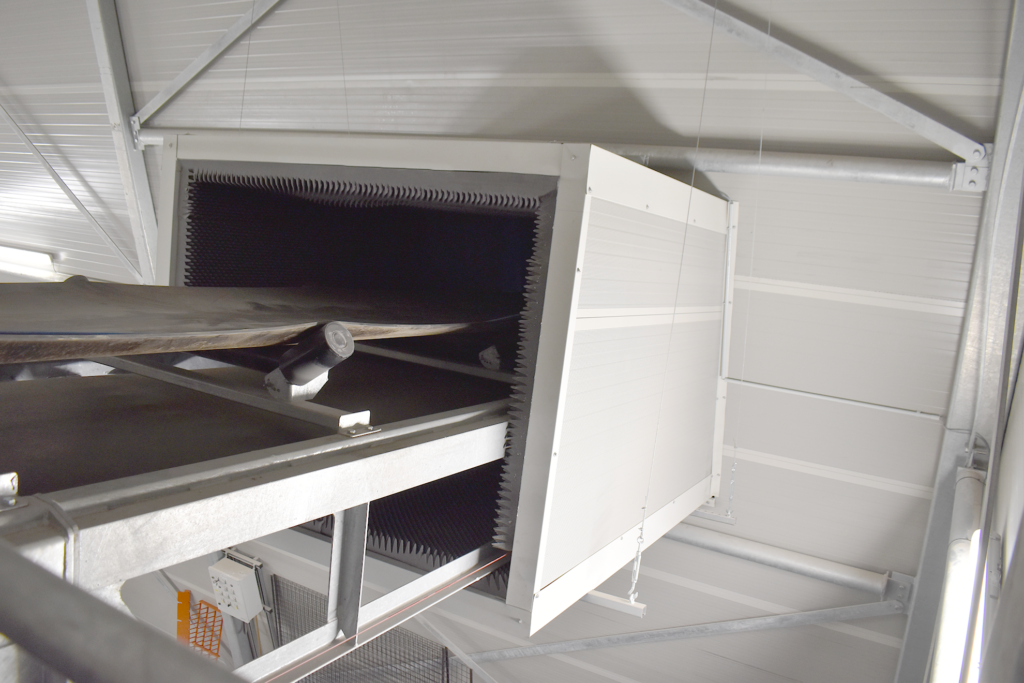
Standard inlet (empty pallet supply) and outlet (fresh product feed) tunnels as well as the inlet for the green concrete conveyor were redesigned to provide greater noise absorption – reducing the amount of noise released into the production area.
Personnel and double doors are handmade to fit onsite during the erection process, using the same sound-absorbing materials as the walls and ceiling of the sound enclosure. The series of pictures below show the level of detail that goes into the design and fabrication of the personnel door with a window between the machine room and the control room.
Visibility into the factory (wet and dry sides) and into the block machine room were very important requirements of W.D. Lewis. There are over 15 m2 window area facing into the block machine room and 17 m2 window area facing into the factory. These large window areas had the potential to create challenges with meeting the noise limits. A unique window solution from the petrochemical industry provided excellent sound dampening characteristics that eliminated the concerns with the large windows.
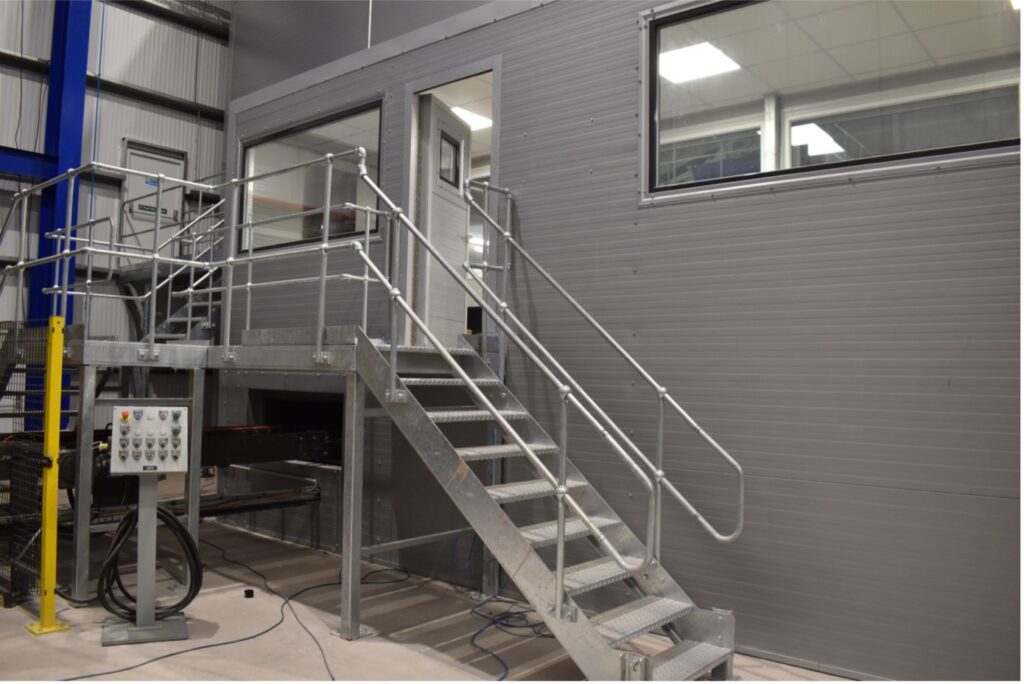
Results and Conclusions:
Upon completion and commissioning of the factory, sound readings were taken to evaluate the results and validate the goals set of 85 dB(A) in the factory and 70 dB(A) in the operator control room. Additional readings were taken in the block machine enclosure to determine the effect of new acoustic treatments on the inner enclosure walls had an effect on the noise level within 3 m of the block machine.
The wall treatments reduced the airborne noise in the machine room to 100 dB(A). The goal of 85 dB(A) in the factory was exceeded with a reading between 60 and 65 dB(A) – the 5 dB(A) variance being due to the noise created by the transport of the steel pallets.
The operator control room, where the controls for the block machine, batch plant and transport system are located and where the plant operating personnel spend the majority of their time should the largest success with a reading of between 40 dB and 55 dB depending upon whether there was verbal communication in the room or it was silent. For comparison, 40 dB is equal to a quiet library while 55 dB is equal to a normal conversation.
One issue which was not correct was the amount of lighting in the block machine enclosure. Due to the movement of the crane, it was decided to add LED lighting tubes to the side walls of the enclosure. This prevents a collision with the overhead crane but causes visibility problems when maintenance personnel are looking into the machine and are blinded by the light across the room on the wall. The wall lights must be replaced with lights from above to provide a better environment for maintenance. A lesson that Kraft has learned for future projects.
Speaking with Martin Lewis during a follow-up visit, he claims, many of his decisions – while guided by his visit to the BAUMA and to other plants as well as information and comments by the various equipment suppliers – are “gut decisions.” He exclaimed that in the case of the sound enclosure and operator control room “It’s about taking care of our people and ensuring that we do the right thing. In the case of the sound enclosure, I’ll sleep well at night.”









